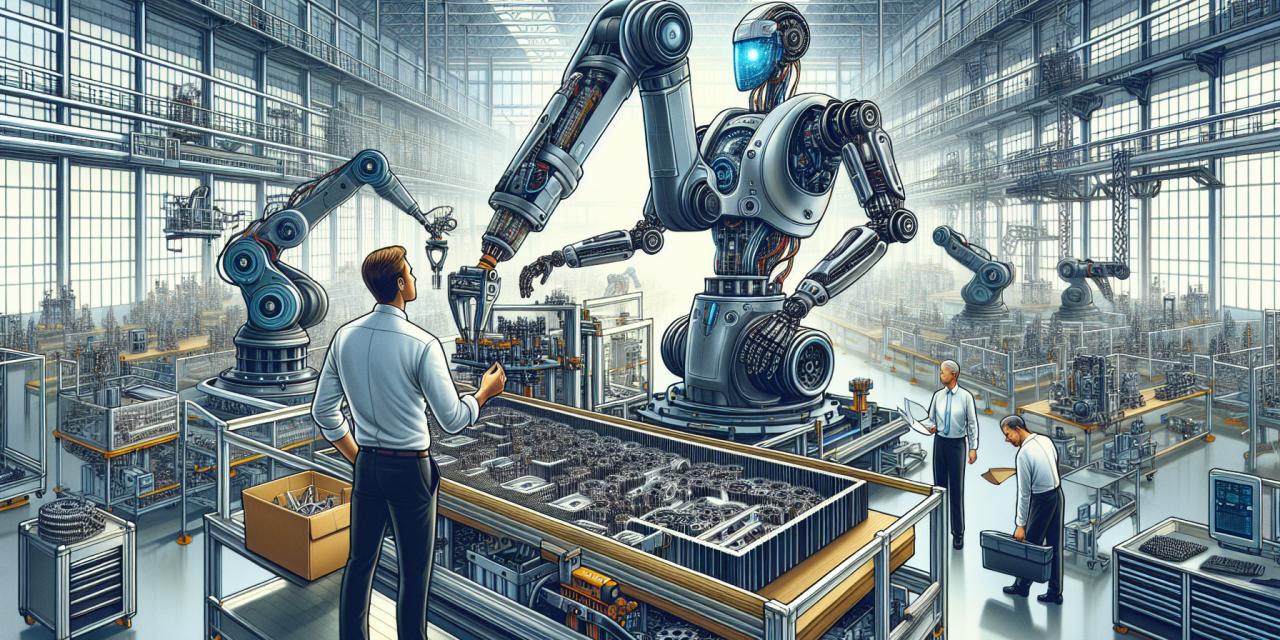Robotics has revolutionized the manufacturing industry by automating repetitive tasks, enhancing production efficiency, and improving workplace safety. This article explores the applications, benefits, challenges, and future trends of robotics in manufacturing, highlighting its transformative impact on industrial operations and economic competitiveness.
Applications of Robotics in Manufacturing
- Automated Assembly and Production: Robotics automates assembly line processes, such as welding, packaging, and quality control, improving precision, consistency, and throughput while reducing manual labor and production costs.
- Material Handling and Logistics: Robotic systems handle material transportation, palletizing, and warehouse operations, optimizing supply chain management, inventory control, and distribution processes in manufacturing facilities.
Benefits of Robotics in Manufacturing
- Increased Productivity and Efficiency: Robots operate 24/7 with consistent speed and accuracy, achieving higher production rates and minimizing downtime compared to human workers, thereby increasing overall manufacturing output and efficiency.
- Enhanced Workplace Safety: Robotics perform hazardous tasks (e.g., handling toxic substances, working in high-temperature environments) that pose risks to human workers, reducing workplace accidents and improving occupational health standards.
Challenges and Considerations
- Integration and Scalability: Deploying robotics requires substantial initial investment in equipment, infrastructure, and workforce training. Ensuring compatibility with existing manufacturing systems, scalability for future growth, and ROI justification are key challenges.
- Human-Robot Collaboration: Balancing automation with human involvement (e.g., supervisory roles, maintenance tasks) and addressing potential job displacement concerns through reskilling and upskilling programs are critical considerations in robotic adoption.
Impact on Manufacturing Operations
- Quality Control and Consistency: Robotics implement stringent quality control measures, detecting defects, and ensuring product consistency through precise measurements and real-time data analytics, minimizing waste and improving product reliability.
- Customization and Flexibility: Advancements in robotic technologies, such as collaborative robots (cobots) and flexible automation solutions, enable rapid reprogramming and adaptation to varying production demands and custom manufacturing processes.
Future Trends in Robotics in Manufacturing
- AI and Machine Learning Integration: Robotics leverage AI algorithms for adaptive learning, predictive maintenance, and autonomous decision-making, enhancing operational efficiency, and enabling predictive analytics-driven manufacturing processes.
- Industry 4.0 and Smart Factories: Robotics play a central role in Industry 4.0 initiatives, connecting robots, machines, and IoT devices in smart factory environments to facilitate real-time data exchange, process automation, and agile production capabilities.
Conclusion
Robotics continues to redefine manufacturing paradigms by optimizing production processes, improving product quality, and creating safer work environments. As robotics technology evolves, addressing integration challenges, fostering human-robot collaboration, and embracing digital transformation strategies are crucial for maximizing the benefits of robotics in manufacturing. By embracing robotics as a catalyst for innovation and operational excellence, manufacturers can achieve sustainable growth, competitive advantage, and meet the demands of an increasingly complex global market landscape.


